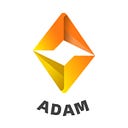The Clarion of the Web3.0 Era is Blown. ADAM Starts the Battle of Data Rights Confirmation on the Chain
Since the birth of blockchain 1.0 represented by Bitcoin, blockchain technology has gained widespread attention and accumulated a large amount of user transaction data, and the birth of blockchain 2.0 represented by Ethereum has enriched the data types of blockchain. The popularity of blockchain technology has increased the demand for visual analysis of data on the chain. Meanwhile, the open nature of blockchain data provides a wide range of data sources for the analysis and calculation of encrypted data on the chain.
Data is a valuable strategic resource, and the development of the current society is gradually shifting from resource-driven economy to data-driven economy. Moreover, the effects are spreading outward, especially in areas such as the data-based internet and blockchain. Due to its openness, transparency and decentralization, the blockchain field has not only formed a highly inclusive business ecosystem, but is also gradually becoming an important base for the development of Web3.0 technology.
People’s conception of Web 3.0 is a relatively decentralized, automated and intelligent new Internet world based on the premise that users’ personal digital identities, assets and data return to individuals. In this world, every interaction we have should be recorded and quantified. We should control our own data ownership and use rights and participate fairly in the resulting distribution of benefits.
The ownership of the digital content created by the user is clearly owned and controlled by the user in Web 3.0, and the value created by it is distributed according to the agreement signed between the user and others. Under this system, these digital contents are no longer simple data, but digital assets, because the rights are guaranteed at the asset level. However, there are still many challenges to realize the development vision of Web 3.0.
Challenges faced by Web 3.0
Value Paradox
So far, traditional Internet companies are still vested interests in data, and they control the ownership of most data, so they lack motivation to promote the development and application of Web 3.0 technology, even in emerging fields. Because the rise of personal data sovereignty is a challenge to the hegemony of traditional Internet giants, the transfer of data sovereignty is no less than a global revolution.
Regulatory Conundrums
Decentralization is one of the development principles of the blockchain industry, but currently few institutions or projects have achieved fully decentralized operation. Decentralization without centralized supervision may make the digital monopoly of Web 2.0 continue to exist. However, supporting centralized supervision is contrary to the Web3.0 development concept, which affects the enthusiasm of the industry development.
Status of Users
Economic advantages form a kind of economic power, and the vested interests basically realize the monopoly of public interests. The disadvantaged status of users can be completely changed only by truly returning data sovereignty to individuals , so that most people can become the beneficiaries of the development of the Web 3.0 era. There is no doubt that more powerful rules are required in order to improve the personal status of users. Both smart contracts and DAO governance are people’s great exploration of new rules. Replacing centralized institutions with automated execution procedures and empowering users with governance rights with DAOs are both effective methods to reveal the value of the individual.
Web3.0 is a brand-new Internet of value, which demonstrates the value of personal data sovereignty, which requires data confirmation. ADAM is well aware of the challenges it will face, so it chooses the emerging field of on-chain data as a breakthrough, to build the first Web3.0-based encrypted data computing network resolutely to change the current chaotic and unnecessary on-chain data ecology so as to promote its orderly development and commercial applications.
ADAM first proposed the concept of DataFi. Furthermore, it directly or indirectly brings economic and social benefits to on-chain applications such as DeFi, NFT, and Metaverse through the combination of real-world and on-chain data, with structured or unstructured data such as text, images, and databases. At the same time, it connects the production, calculation, transmission, storage, usage of data and some other links. And in the form of smart contracts, it protects each role participating in the data circulation to distribute the benefit according to the agreement.
ADAM believes that the development trend of Web 3.0 is that the Internet will develop with the needs and usage of users, and belong to the users ultimately.
